


The fitness sector is flourishing: about 60% of Americans are giving up their gym memberships for fitness apps. The convenience of a home workout is winning. Fitness apps attract users with flexible schedules, customized activities, and the comfort of home settings.
In this guide, we’ll discuss the fitness app development costs. Your bank account will be as toned as your abs thanks to monetization tactics and features that will keep your users hooked.

The fitness app market continues to thrive, driven by increased health awareness and the growing popularity of digital wellness solutions. Leading fitness apps like MyFitnessPal, Strava, Peloton, Lose It!, and Fitbit — each carved out a significant market share.
These mobile apps stand out because of their user-friendly interfaces, comprehensive features, and ability to create engaging communities. For example, MyFitnessPal excels in nutrition tracking, Strava in social fitness sharing, Peloton in live and on-demand workouts, Lose It! in weight management, and Fitbit in seamless integration with wearable devices.
According to Statista, MyFitnessPal led the revenue charts in January 2025, generating over $16 million, highlighting its dominant position. Overall, the global fitness app market is expanding rapidly, with Allied Market Research projecting it to reach $120.37 billion by 2030.
This expansion, coupled with the increasing demand for personalized health solutions, opens up opportunities for newcomers. There’s still room for innovative apps that can address niche fitness needs or offer unique features, giving entrepreneurs a chance to develop their own popular workout apps.
Fitness applications help solve various problems, such as finding an appropriate workout or stopping putting sports on the back burner. The functionality of the app depends on the problem. We've identified five types of health and fitness apps and are going to answer the question “How much does it cost to create a fitness app?”
💰 Average app development cost: $100k
These fitness apps provide three main types of exercises: strength, endurance, and mobility. With a personal training app, users can select pre-built workout plans or create their own.
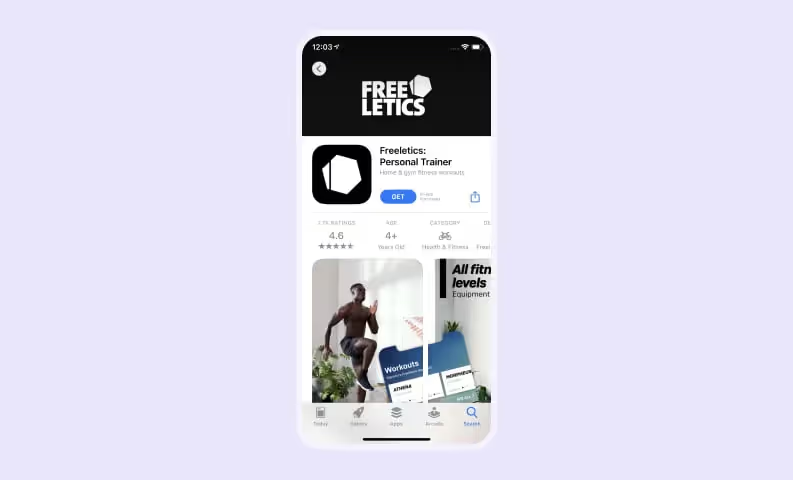
An exercise library often includes descriptions or demo videos to help users exercise safely and effectively. Fitness app users can also adjust the difficulty level, schedule their workouts, and track progress.
Many fitness apps now feature IoT integration with wearable devices like fitness bracelets or smartwatches. This allows users to track key health metrics and track progress.
At Purrweb, we have extensive experience in IoT integration. In our recent case, EnerGO, we developed an IoT mobile app for power bank rental.
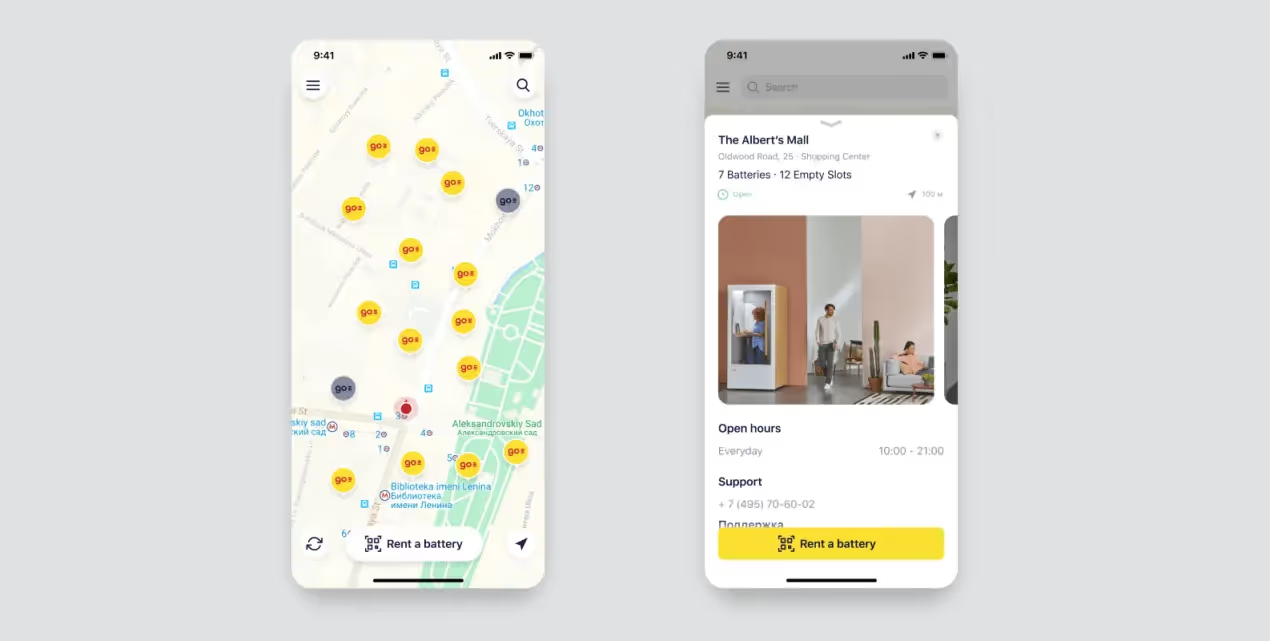
💰 Average app development cost: $110k
Diet and nutrition apps help track eating habits, count calories, and stay hydrated. Who can imagine a diet app that doesn’t provide users with an opportunity to set goals, check calories, and find proper nutrition recipes?
Usually, diet & nutrition apps include:
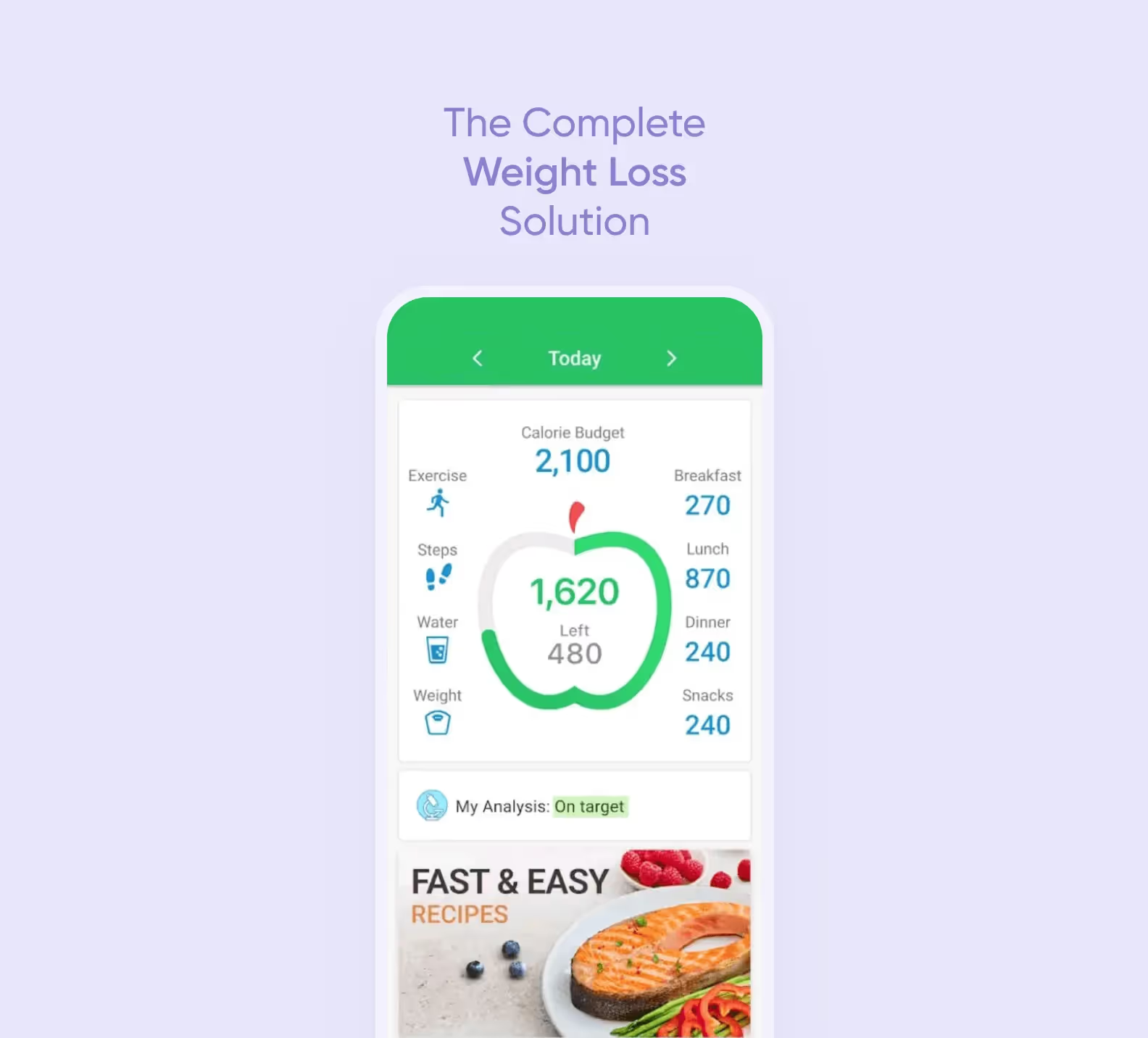
💰 Average app development cost: $75k
Over the last few years, people have started buying smart devices more often: Apple Watch, Xiaomi Mi Band, and SmartWatch. With their help, the user can count the number of steps taken, the heart rate, and even the stress level of a day!
Activity-tracking apps are used not only by professional athletes but also by people who want to track their health indicators. Think in advance about the potential of your own fitness app and add sync with a wearable device — users will appreciate it.

💰 Average app development cost: $120k
Regularity will lead to success in anything! Habit-forming health and fitness apps help users get rid of bad habits, form good ones, and gradually begin a healthy lifestyle.
Effective habit trackers include features like:
These elements work together to keep the fitness app users accountable, motivated, and informed about their progress towards creating healthy habits.
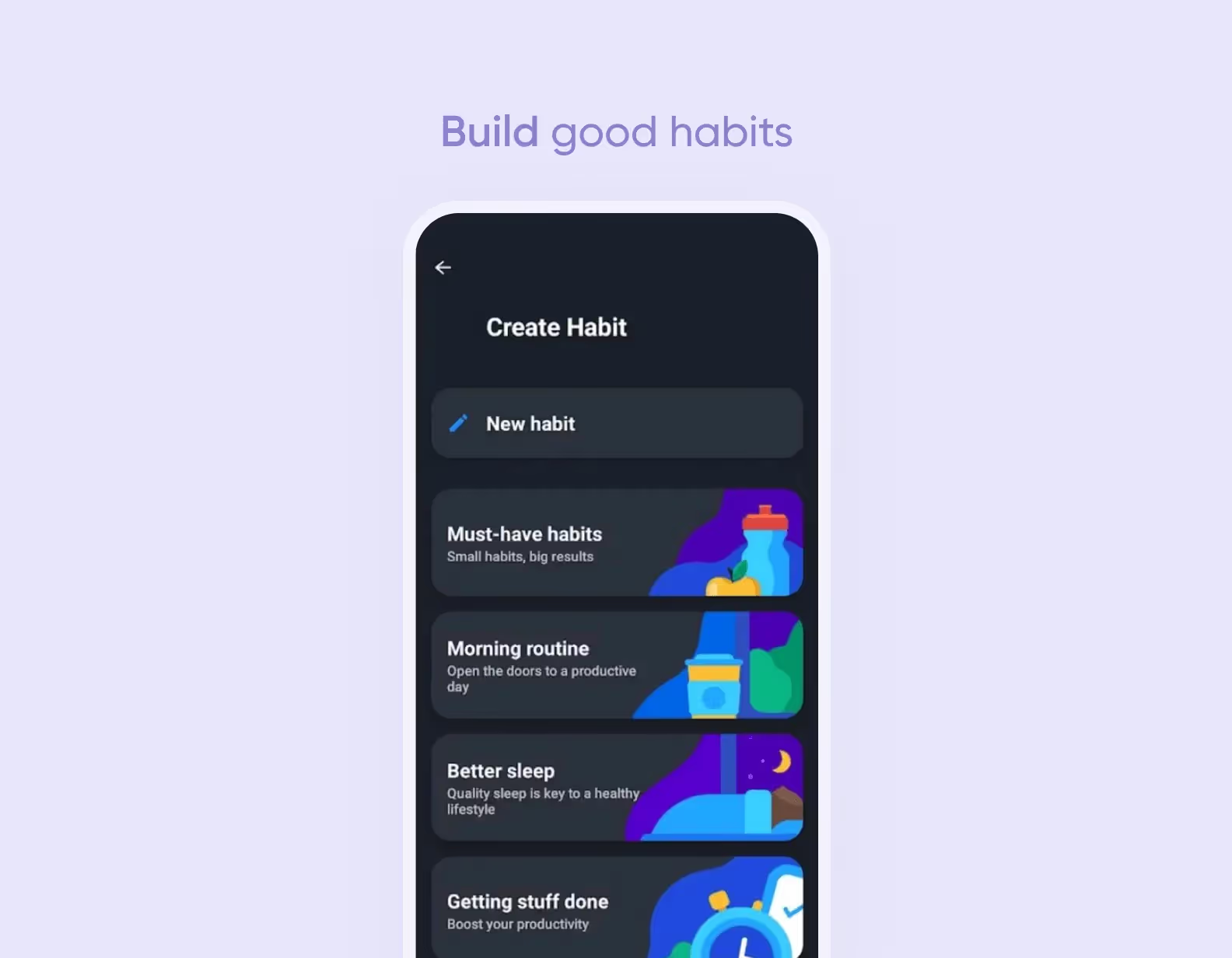
💰 Average app development cost: $80k
Meditation and yoga apps provide a curated selection of guided yoga sessions and meditation practices, accessible anytime and anywhere.
The typical yoga and meditation app features a diverse library of content, including:
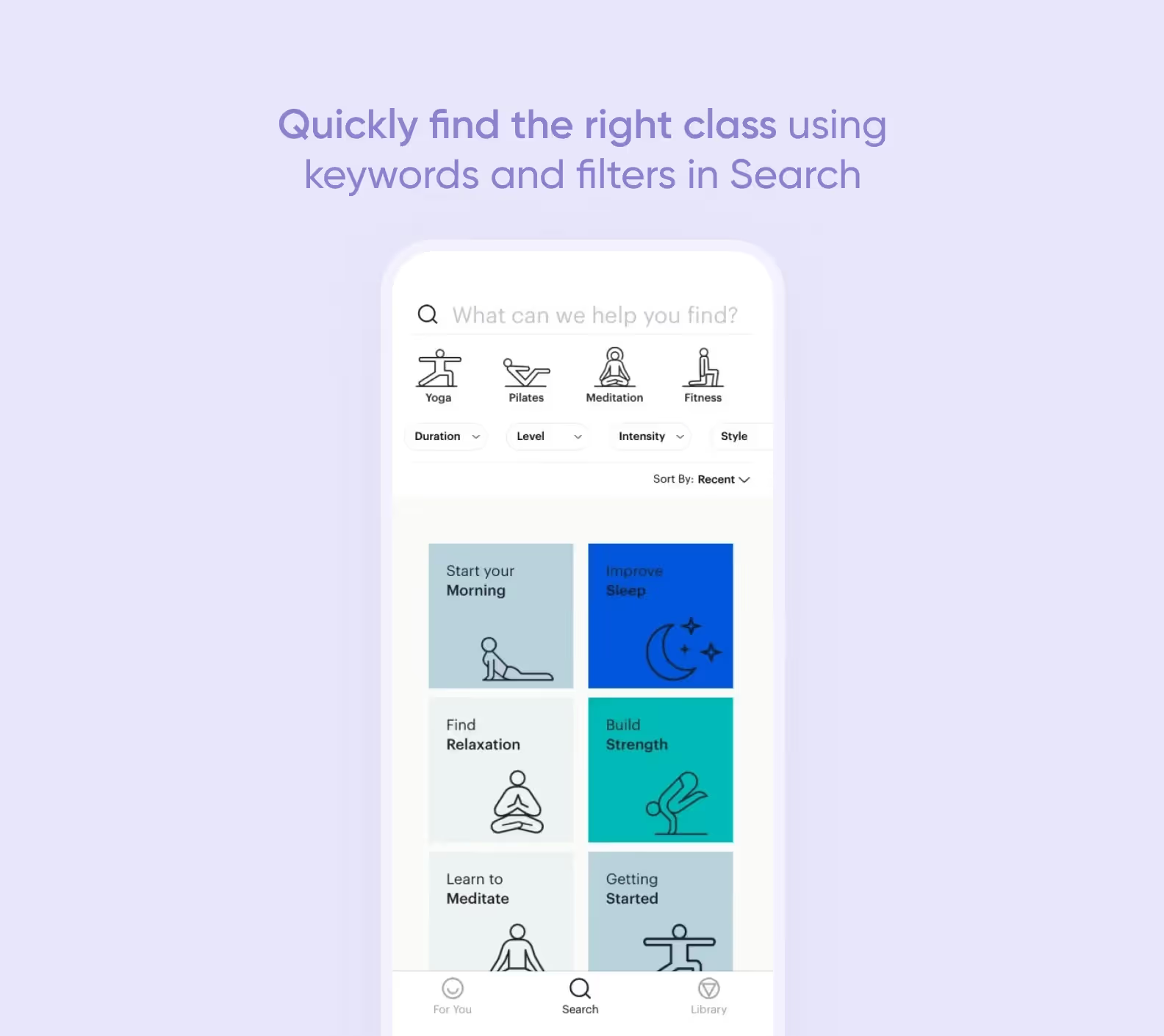
Let’s look at 6 common factors that can have an impact on fitness app costs.
Native development means separate applications for iOS and Android. This approach is suitable if you are targeting users of a specific operating system. Developers write two codes: Swift/Objective-C for iOS and Java/Kotlin for Android. Although this approach is more expensive and time-consuming, it has advantages:
If you want to cover several platforms at once, cross-platform development is the way to go. In this case, developers create a single codebase that works on both iOS and Android. In this case, they’d use frameworks like React Native and Flutter. The advantages are:
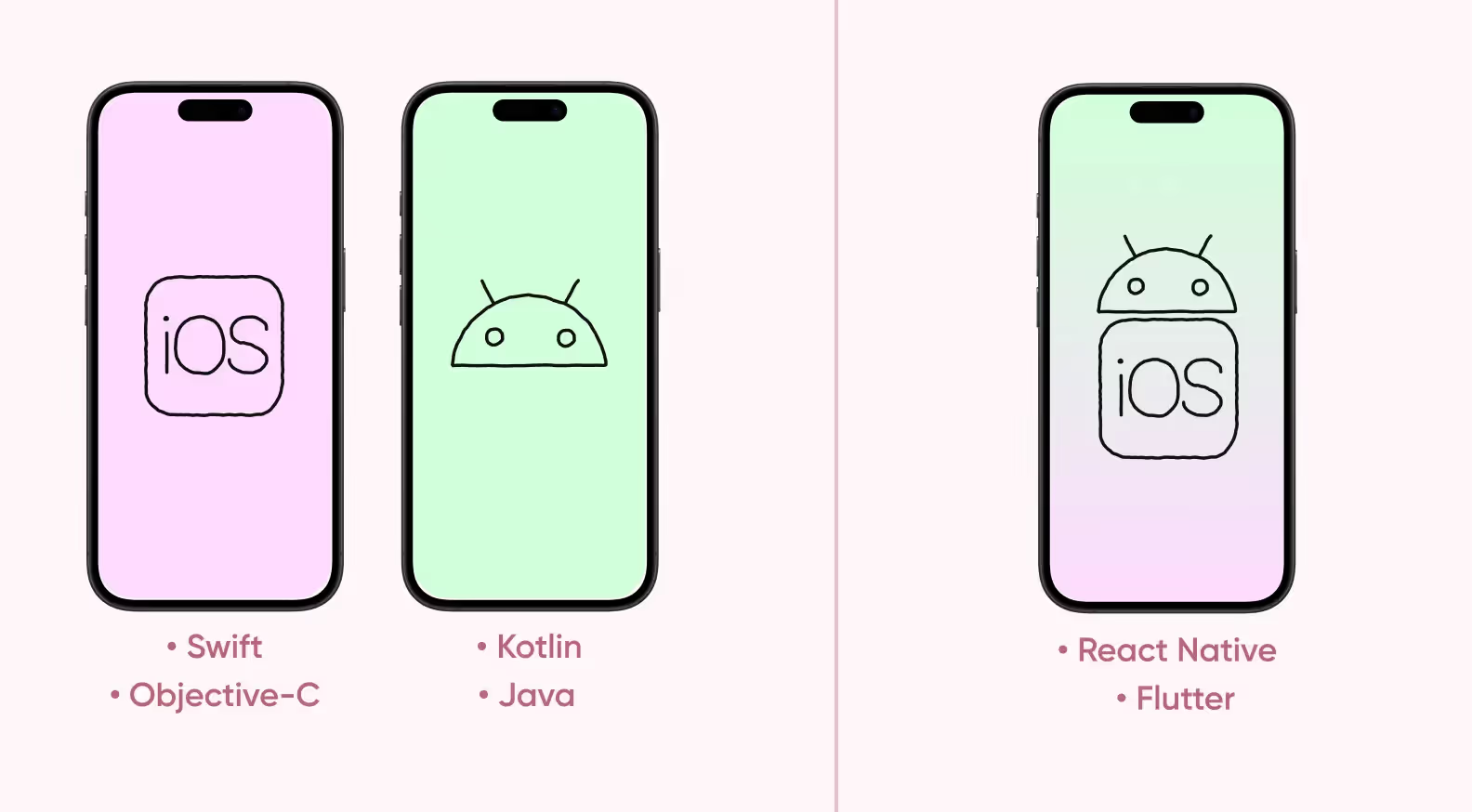
The more features an app has, the more work it’ll need, and the higher the cost. A simple app has 5–10 features. A complex one has 25+. Each feature needs to be designed, developed, and tested.
Basic features such as registration, goal setting, notifications, and progress tracking are less expensive. They do not require complex backend logic or external integrations.
Advanced features include monetization, video content support, gamification, and connection with devices. They increase the load on the infrastructure, require expert knowledge, and need additional integrations.
The complexity of the features significantly impacts your fitness app cost. For instance, developing an app with 30 simple features costs less than developing an app with 10 advanced features.
Designers study competitors and collect references to create a clear and attractive interface. If there is uncertainty about the style, you can ask them to conduct additional research and interview potential users.
UI/UX design includes not only screen design, but also animation and visualization. For example, heartbeat animation or visualization of large amounts of data through graphics. Developing these elements entails an increase in working time.
After releasing the app, also consider the expenses of refining and improving screens based on user feedback.
To reduce fitness app costs, you can use template designs, either paid or free. However, keep in mind that these designs offer limited customization options, don’t adapt well to different screens, and may not cover all necessary scenarios.
If the app interacts with sensitive user information, you must study the relevant regulations and consult with lawyers beforehand. For the US market, it’s HIPAA, and for Europe — GDPR.
Sensitive information protected by these laws includes:
Failure to comply with the regulations will result in fines, legal proceedings, and damage to your reputation. To prevent this, you need to:
There are two types of integrations: service- and device-based. These integrations add new features to your app, increase user engagement, and give you a competitive advantage.
API integrations connect to third-party services such as payment systems, customer support services, and trackers. The app gathers data from other services, while integration with payment services allows you to monetize your product.
Integrations with physical devices include smartwatches, activity trackers, scales, and heart rate monitors. These devices automatically collect and transfer data to the mobile app, allowing users to track their metrics in one place.
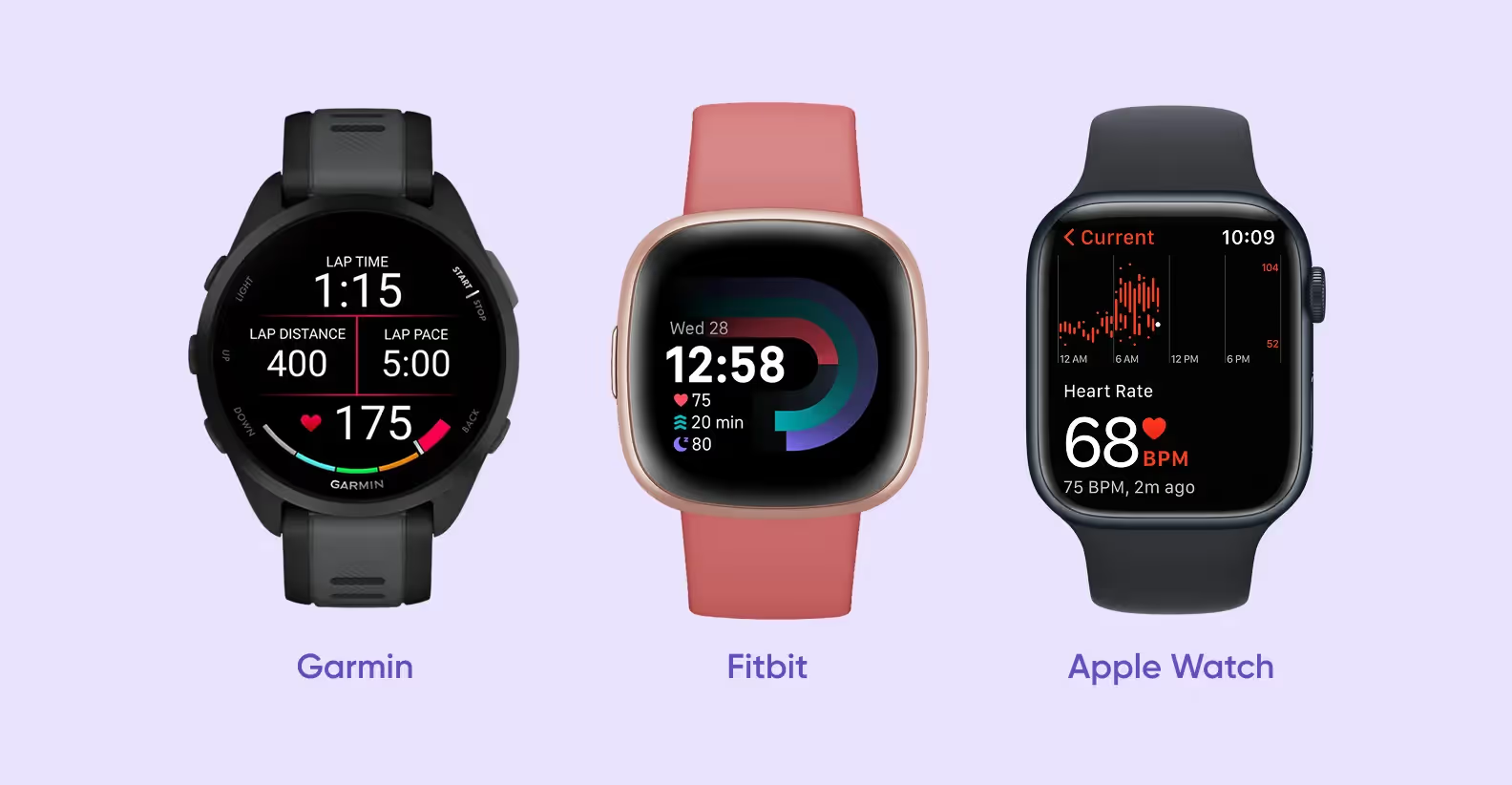
Although integrations offer advantages, their development entails additional complexities and fitness app costs. Developers need to study documentation, configure data exchange, test on real devices, and provide support after release. Additionally, keep in mind that there are both free and paid APIs.
There are 3 options to build a team: in-house, freelancers, and outsourcing.
In-house. With this option, you assemble your own team of analysts, developers, designers, etc. It’s suitable if you have the time and budget to search for employees, and if you plan to create a full-fledged product right away. The team will be involved in the project, and you will have complete control over the development process. However, this option has high fixed costs and a lengthy hiring process.
Freelancers. This involves hiring employees for specific tasks. The option is suitable for companies working on an MVP or looking to quickly fill a vacant position. Freelancers can be flexibly assigned to tasks, but they may violate NDAs or fail to communicate effectively.
Outsourcing. You hire an external team for your project. The agency will help bring your project from idea to release. Later, they hand over the documentation to your team. This option is ideal if you need to launch a project quickly or have a limited budget. However, before starting the project, research the agency thoroughly and talk to the team to ensure they are right for you.
The features of your fitness app define its success. To help you choose, we’ve highlighted the core features every fitness application needs. Based on the fitness app that we’ve designed, we’ll illustrate how certain features help keep users engaged, as well as how much they cost.
💰 Average development cost: $4k
The login screen primarily aims to to authenticate users and provide secure access to their accounts. A well-designed login screen should strike a balance between security and user-friendliness. It includes fields for entering a username or email address and a password, allowing returning users to quickly access their profiles.
For our fitness app, we also added the ability to log in via email and social media to streamline the login process.
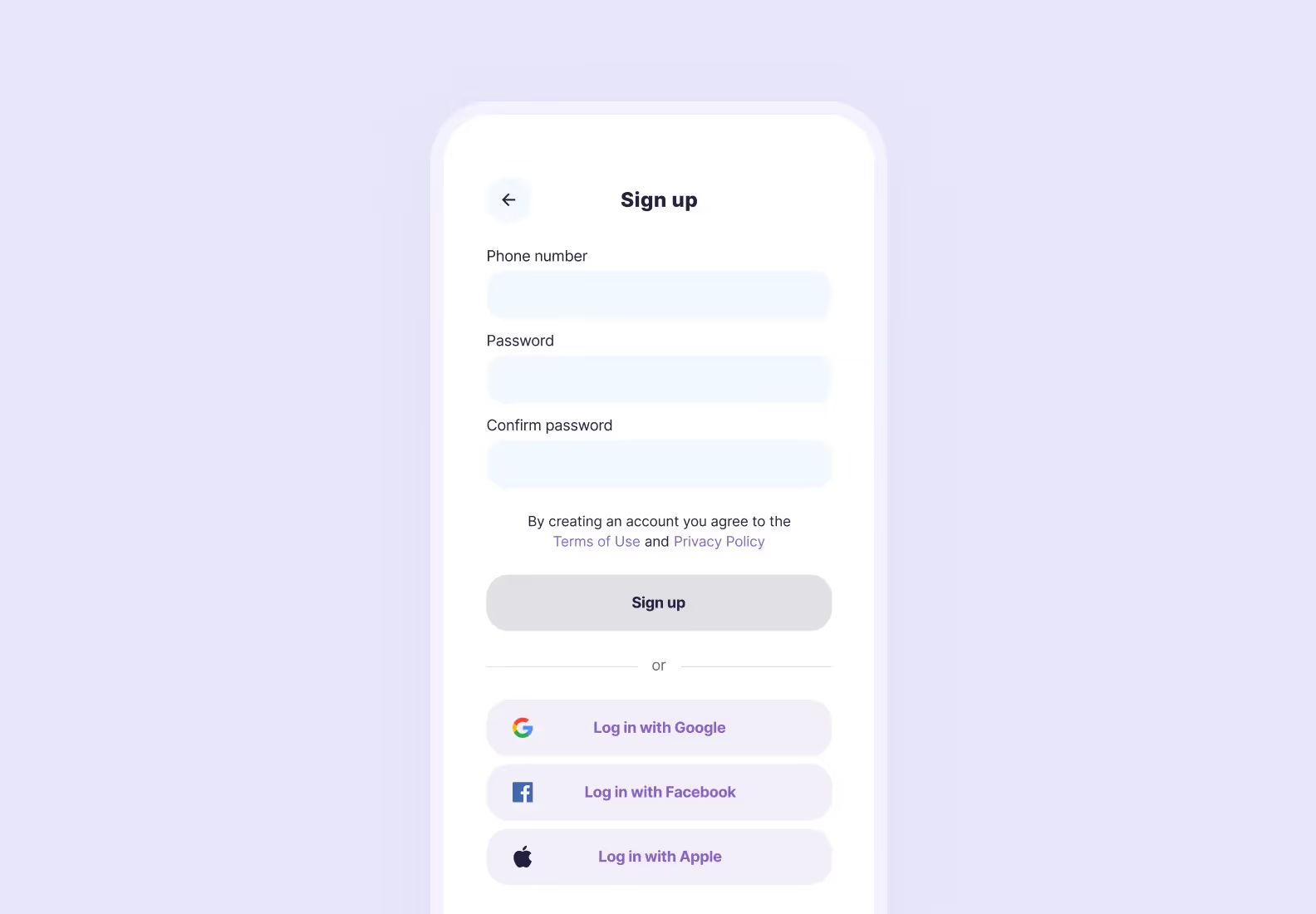
The login screen should also reflect the app’s overall design aesthetic, creating a cohesive and engaging user experience from the very first interaction.
💰 Average development cost: $6k
The user profile is the heart of personalization in fitness apps. It collects essential information about the user, including basic details like gender, age, height, and weight. The profile also captures dietary preferences or restrictions, which is crucial for apps offering nutrition advice.
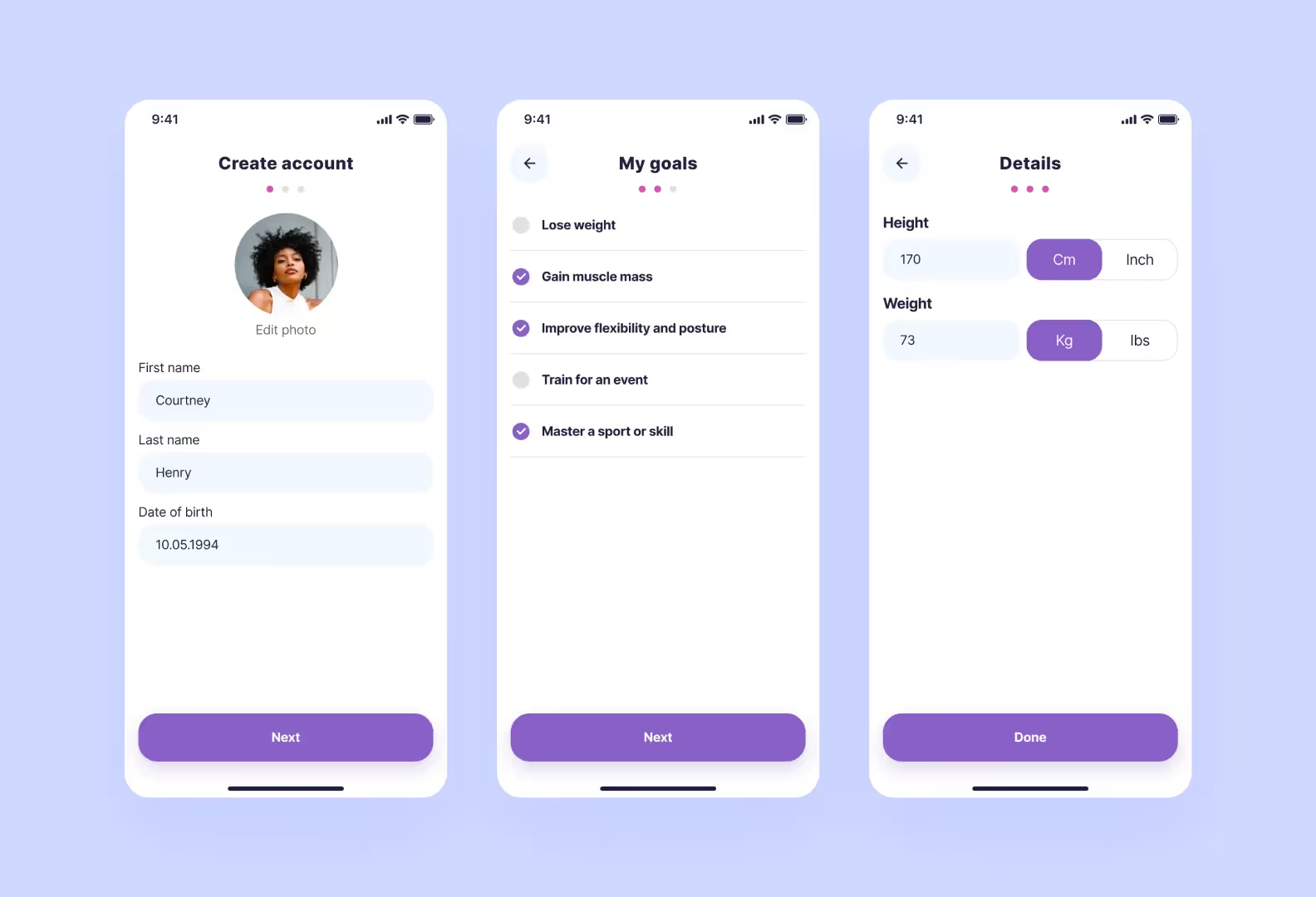
A key feature is the progress tracking section that allows users to see how far they’ve come in their fitness journey. The ability to update information is important, as goals and stats change over time. All this data helps the app tailor workouts, meal plans, and overall guidance to the unique needs and preferences of users.
💰 Average development cost: $30k
The workout menu typically includes video demonstrations and workout cards with text and image instructions. The fitness app usually provides customizable workout plans based on goals and fitness levels, ensuring everyone gets an appropriate challenge.
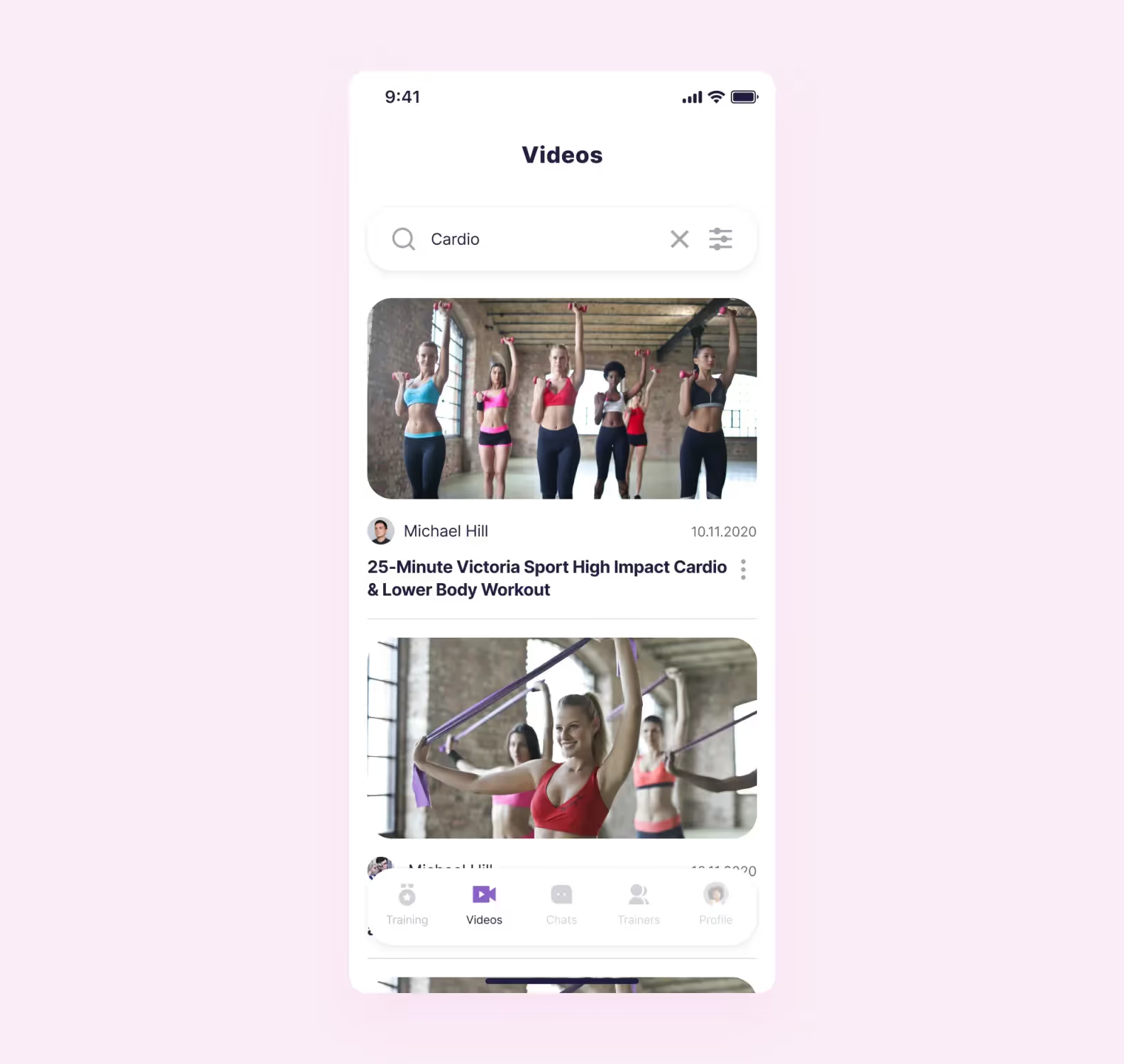
By offering diverse content in various formats, the workout section caters to different learning styles and fitness preferences. This approach increases the likelihood that users will stick with their fitness routines and achieve their health goals.
💰 Average development cost: $30k
To set goals means to challenge yourself. The desire to get better every day needs to be encouraged. Make sure that for each new record or completed goal, the user gets something in return. Add a results-based achievement system and grant the user a virtual or real prize. It will help with the marketing strategy of your fitness application — you can find advertisers willing to show up as partners.
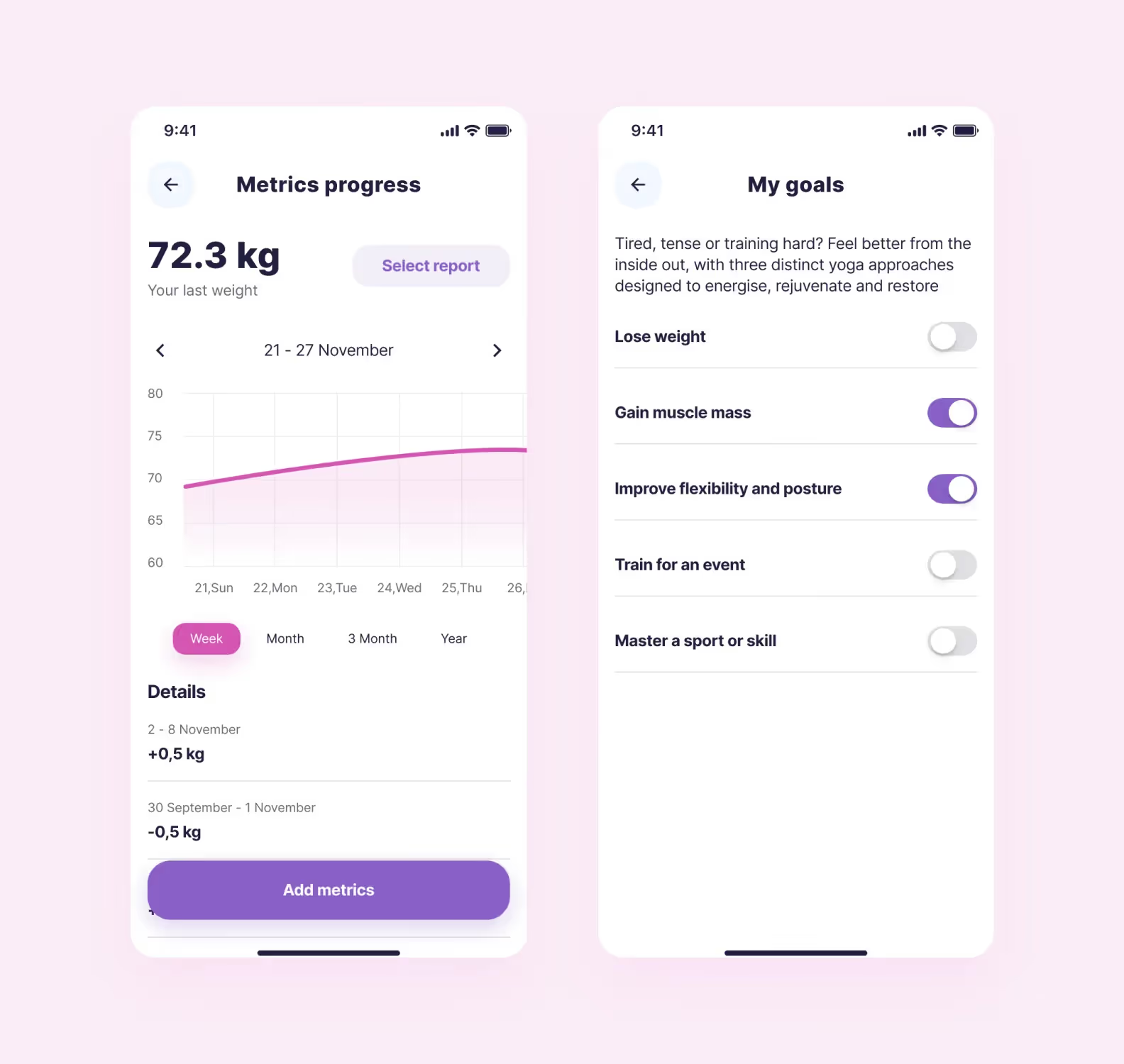
For more specific fitness goals, it might track weight lifted, running pace, or swimming laps. Many advanced trackers also incorporate sleep data and heart rate information, recognizing the importance of rest and recovery in overall fitness.
💰 Average development cost: $5k
Allow users to pick a workout plan according to their needs. Add filters to quickly search the workouts.

Search parameters can be different — think about them in advance. For example, it can be filtered by training duration, the physical level required for training, type of load, or focus on a specific muscle group.
💰 Average development cost: $1.5k
Those who struggle to plan their day will appreciate a customizable push notification system. The most common problem in sports is the loss of enthusiasm. Bad weather, laziness, or household chores — good reasons to skip exercises or break the diet.
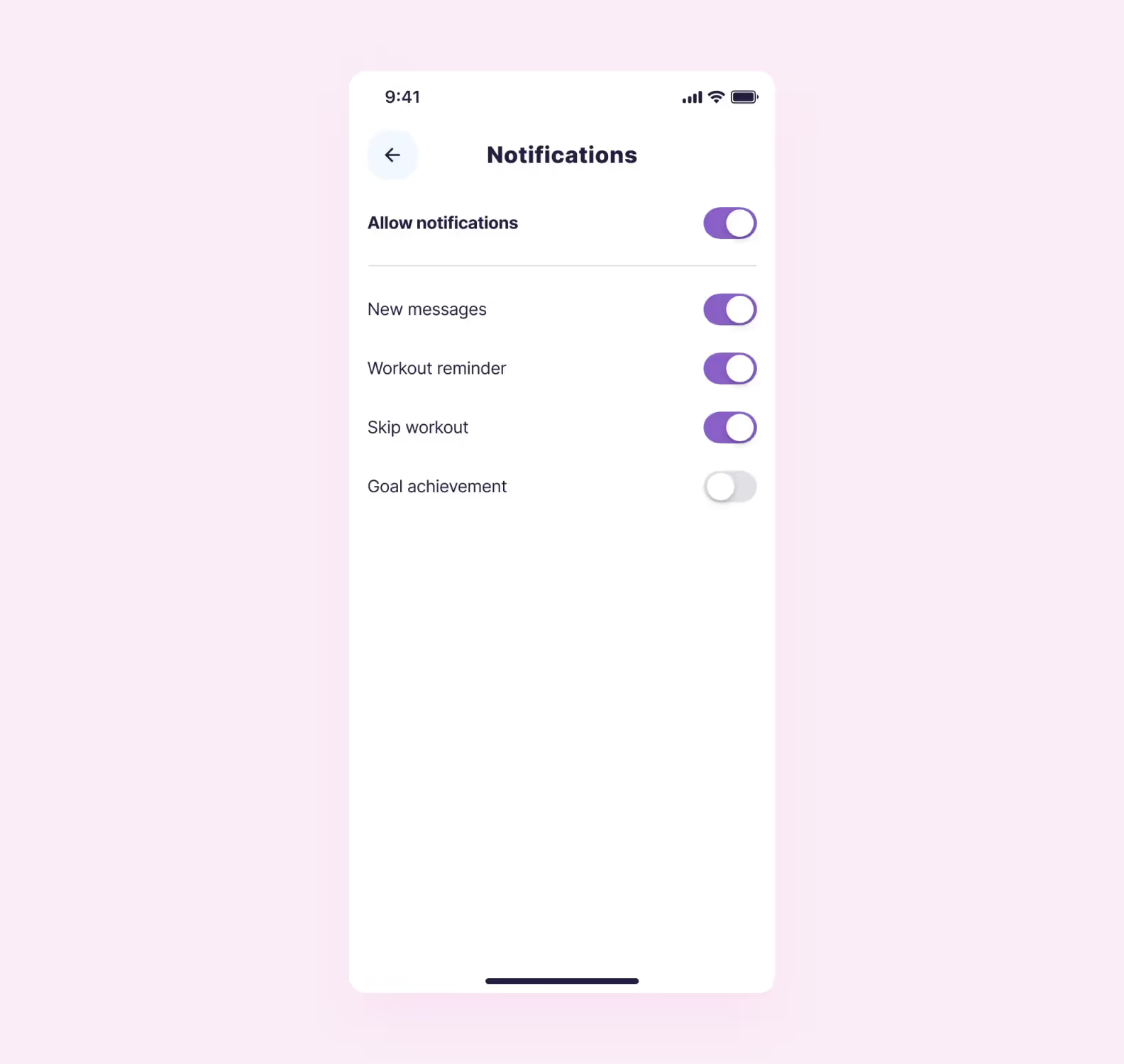
💰 Average development cost: $12k
Most users have smart devices to help them track their physical activity while doing sports. Smart devices became popular a few years ago, and today, almost everyone uses them to monitor health indicators. The user who has a smartwatch bought it for a reason — they want to use it in training. Most likely, this user will prefer a fitness application that works in tandem with their device.
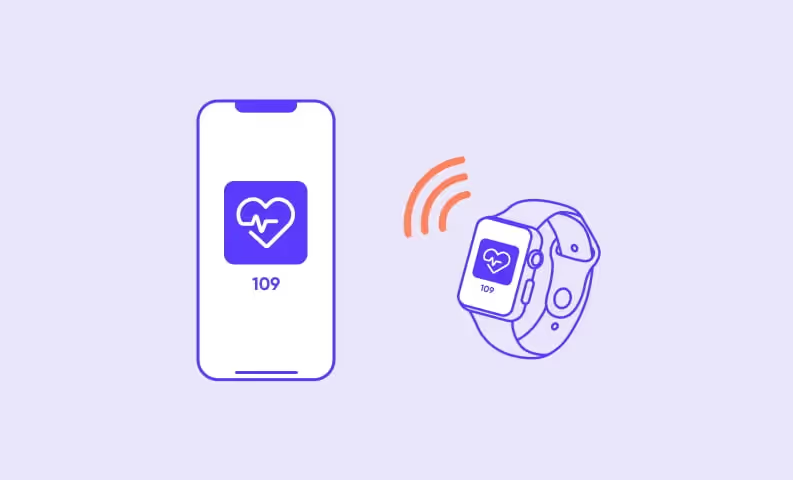
To stand out in the market, it’s not enough to do a bare minimum, so consider incorporating these features. They can transform your fitness app from a simple tool into an indispensable fitness companion that adapts to users’ evolving needs.
💰 Average development cost: $2k
Geolocation enhances the user experience by helping them find fitness-related locations and participate in local activities. Such as:
Implementing geolocation requires careful consideration of user privacy and data protection. Ensure secure data handling and provide clear opt-in/opt-out options for location tracking.
💰 Average development cost: $50k
A well-designed meal planning and calorie counting system helps maintain a balanced diet that complements user fitness journeys. The meal planning feature should offer personalized recommendations based on goals, dietary restrictions, and personal preferences. For instance, when aiming for weight loss, a user will receive different meal suggestions than focusing on muscle gain.
Calorie counting functionality is crucial for tracking daily food intake. This feature includes a searchable food database, barcode scanning, and visual representations of daily calorie intake.
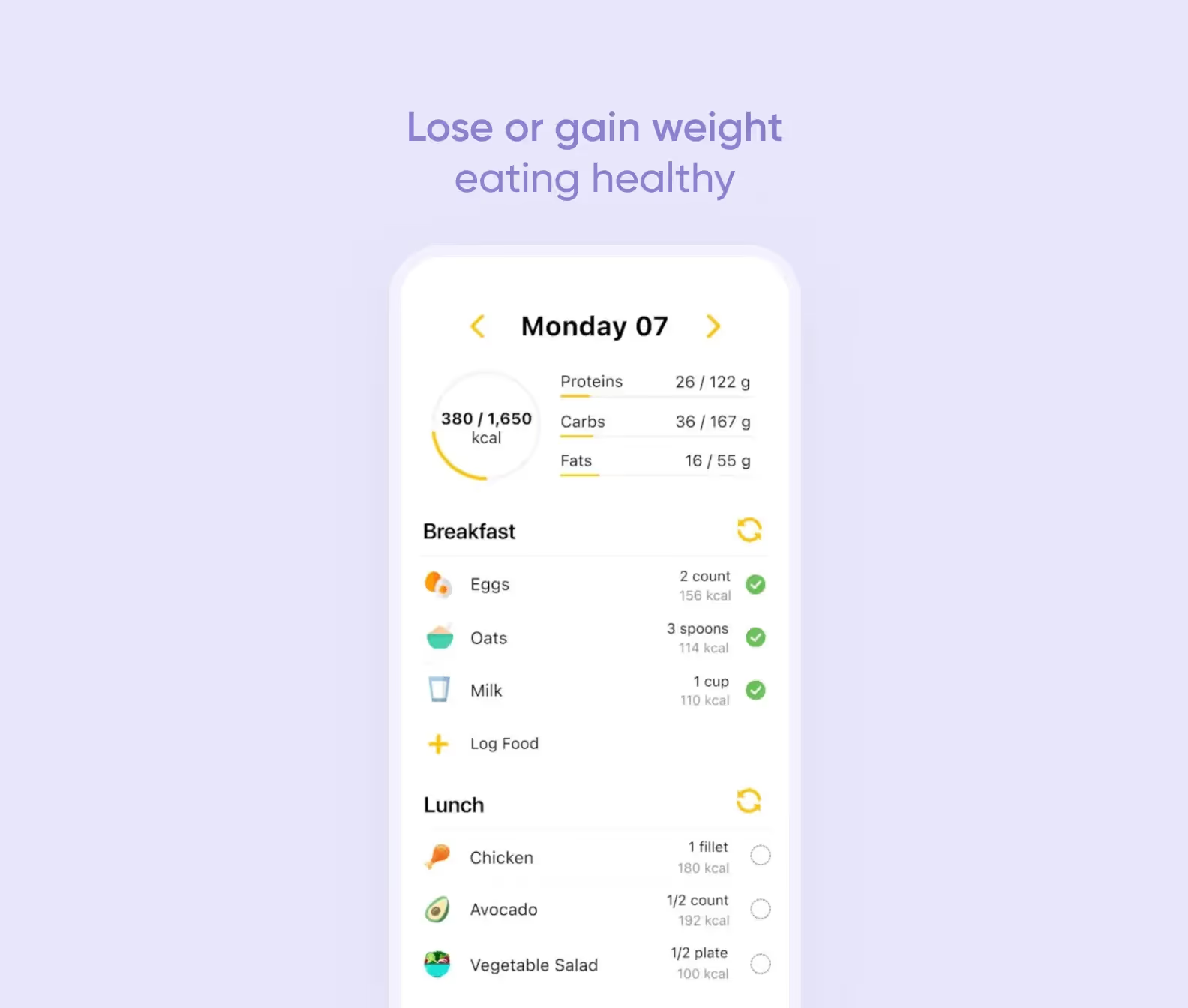
💰 Average development cost: $30k
Live streaming capabilities can transform a fitness application from a solo experience into an interactive, community-driven platform. This feature allows users to participate in real-time workouts led by professional trainers or even share their own fitness journey with others.
Make sure to provide tools to host and follow live workout sessions, fostering a sense of community within the fitness app. This could include features for scheduling sessions, promoting upcoming streams, and building a follower base. Also, remember to include a replay option for those who miss live sessions, enabling on-demand access to the content.
💰 Average development cost: $20k
Incorporating an educational component will empower novices with knowledge about fitness, nutrition, and overall wellness, helping them make informed decisions about health. Consider creating a dedicated section within the app for educational content that includes:
To make this feature more engaging, implement a personalized content recommendation system. This system could analyze a user’s profile, workout history, and browsing behavior to suggest relevant educational materials. For instance, if someone frequently engages in strength training, they'll receive articles about muscle recovery and protein intake.
💰 Average development cost: $25k
Gamification, the application of game-design elements and principles in non-game contexts, has revolutionized various industries, including health and fitness apps.
Progress bars are powerful generators of motivation. They capitalize on the psychological principle of the “endowed progress effect,” where people are more likely to complete a task if they perceive that they’ve already made some progress.
Similarly, leaderboards foster a sense of friendly competition, allowing users to compare their performance with friends, family, or even strangers. A well-known fitness app, Nike Run Club, has a great option — users can choose a distance and date and invite their friends. The one who does the best receives a gold medal!

💰 Average development cost: $20k
Being guided by a highly trained professional is always safer, so users will appreciate having access to expert advice among your custom fitness app features. This is particularly important for beginners who may be unsure about proper form, intensity levels, or how to effectively structure their workouts. Even for more experienced fitness enthusiasts, having access to professional guidance can help break through plateaus and optimize performance.
Think about adding an online mode of workouts under the mentor’s control. You can hire professionals who will help your users develop an effective workout program, teach them how to track progress, and set the right direction in building their health.
💰 Average development cost: $15k
The ability to share results will motivate users to grow. For example:
When no one knows that you have started doing a sport, there is a temptation to reduce physical activity or skip a workout. But if there's someone who can find out that you skipped a training session, for example, a friend who uses the same fitness app, it's an additional motivation not to skip it.
Friends will motivate users to exercise regularly and input the results in the fitness app!🙃To maximize these benefits, you should offer privacy controls, diverse social options, and integration with social networks.
As we showed before, we developed a fitness app to connect personal trainers with users for online workouts. The app serves both existing gymgoers transitioning to home workouts and new users looking for personalized workout plans.
Our clients already had a website. However, they were not satisfied with it, so we started the app development process from scratch.
To connect two distinct roles — coaches and athletes — we needed to develop two separate applications. We built a mobile app for users and a web app for coaches.
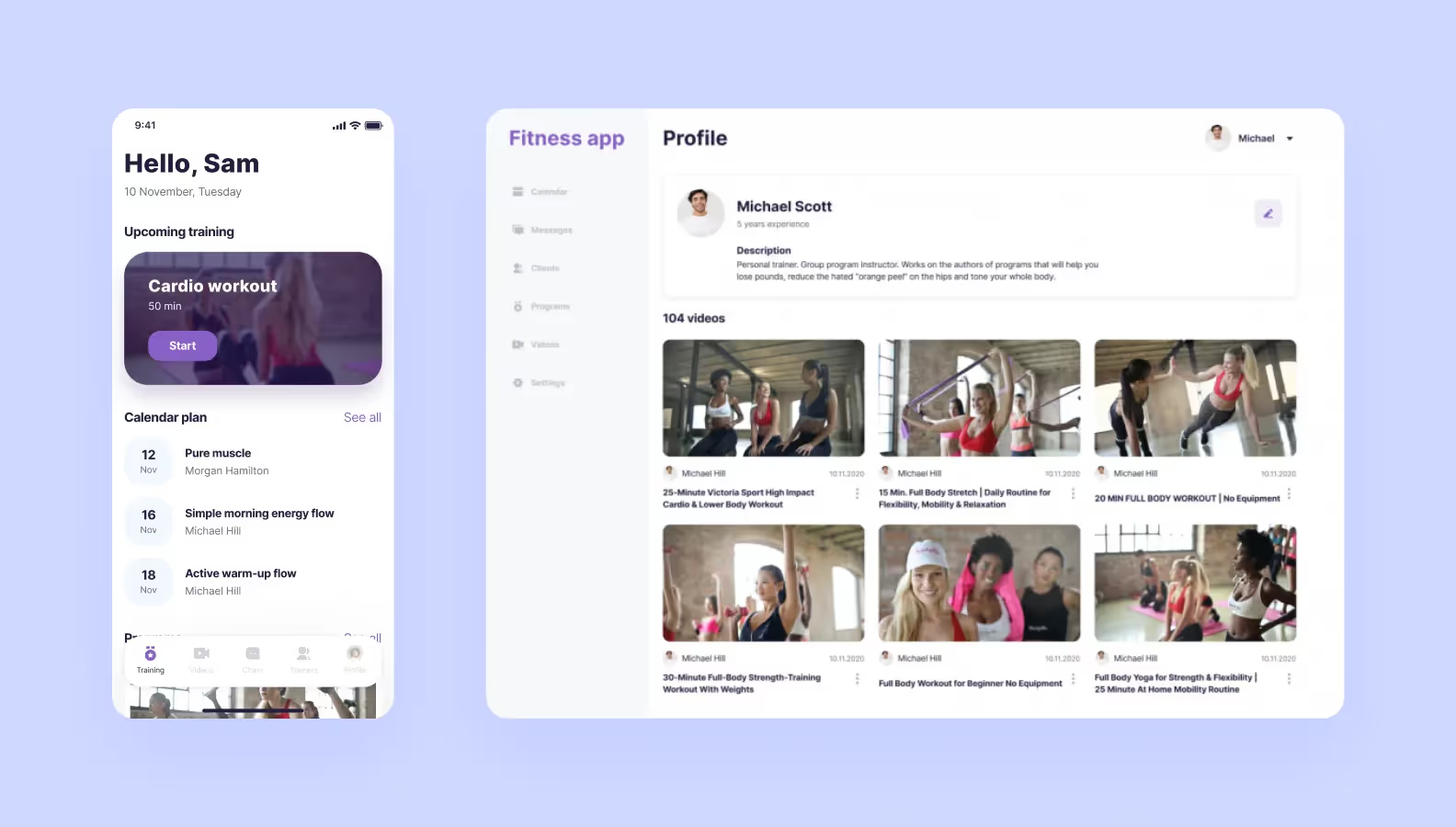
We also added specialized features: customizable training plans and invite capabilities for trainers to interact with clients directly.
And we still managed to meet the deadlines and stay within the budget. You can learn more about this case in the link below.
At Purrweb, we estimate a project cost at the discovery stage. If you’re going to create your own workout app, you should be aware of all the parts of the fitness app development process and know what the total cost of development consists of.
Here’s how our team estimates rates and timeframes of health and fitness app development:
Overall, you will need $50,000-$56,000 to launch your own fitness app. And developing an application will take approximately 920–1,020 hours, which equals four months.
How you prepare can also affect the final fitness app development cost. Taking a thoughtful approach in the early stages will help you avoid unnecessary expenses and rework.
Before starting the development process, understand who the application is for and what problem it’ll solve. Define your target audience, formulate your business model, and gather examples of similar projects. Moreover, make a list of features that users would love to see in your app.
The clearer your vision of the final product, the less time and money you will spend on refinements.
Ensure that users actually need your app. Conduct a project discovery phase, which includes surveying potential users and calculating the unit economics. You can also create a landing page to advertise your future project and collect interest statistics.
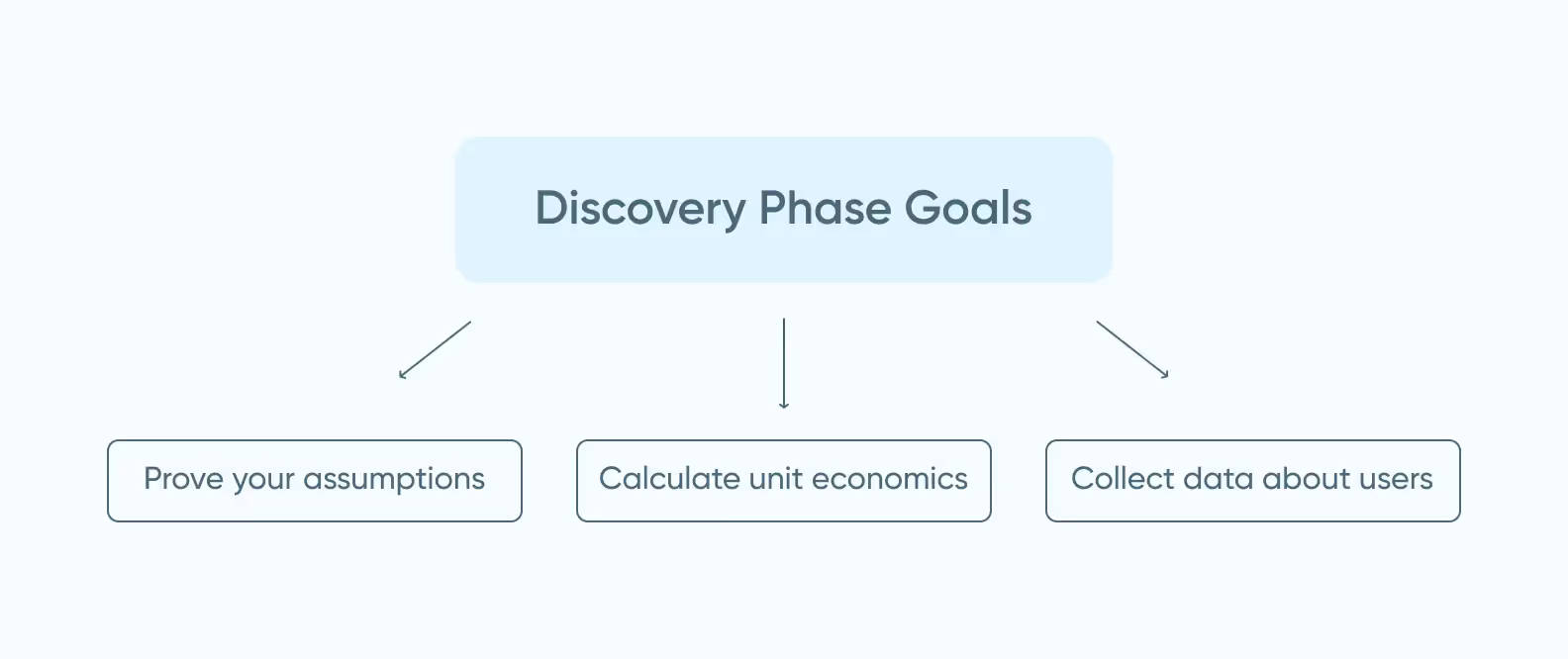
This approach is less expensive than writing code, releasing the app, and then finding out no one needs it. If there is no demand, you can refine or change the idea.
A minimum viable product is an app with basic functionality. An MVP is less expensive than a fully-developed product and allows you to enter the market quickly. With an MVP, you can attract your first users, collect feedback, and decide how to further develop the app. If the idea doesn’t work out, you can pivot.
Let’s dig deeper into the monetization models and learn how you can earn money from health and fitness apps. The key to successful monetization is finding the right balance between providing value to users and generating revenue for your business.
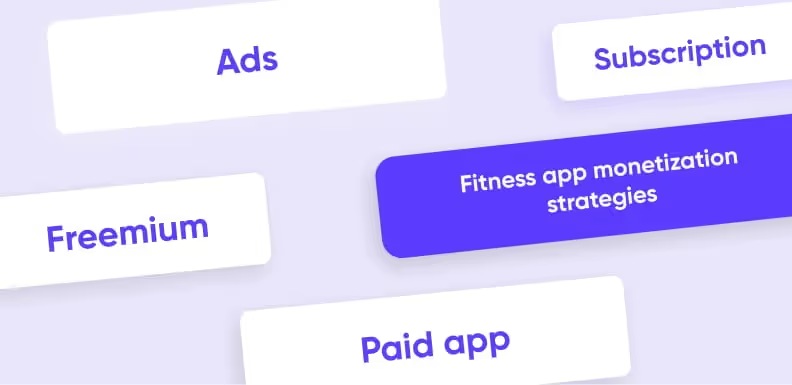
One of the monetization options is to add advertisements for other brands to your fitness app. Everyone is happy in this scenario: brands increase sales, users get a free app, and you earn money from advertising.
This model can be particularly effective for mobile fitness apps with a large user base, as it allows you to generate revenue without charging users directly. However, it’s crucial to implement ads in a way that doesn’t disrupt the user experience. Consider using native ads, rewarded video ads, or banners.
Selling a fitness app on the store isn’t the safest option for a startup. Users are only willing to pay when they're sure of receiving a quality product. However, you can always offer the user to start with a trial version and add relevant in-app purchases. Remember that while this model can provide revenue upfront, it may limit your app’s reach compared to free alternatives.
Users need to subscribe to get access to the functionality of an app. Add a trial period so that users can evaluate the quality of your fitness app.
Subscription models have become increasingly popular because of their ability to provide consistent revenue. Ensure that your subscription offers clear value over the free version, and continuously add new features or content to retain subscribers.
The basic functionality of an app is available to everyone. Users pay only for premium or additional features like disabling ads, access to personal trainers, or individual training plans. You can mix this strategy with other monetization models.
The key to a successful freemium model is striking the right balance between providing enough value in the free version to attract users while offering compelling reasons to upgrade.
Creating a successful fitness app combines technological innovation with a deep understanding of user needs.
➡️ So, <a class="blog-modal_opener">take the first step</a>. Build a fitness app, and who knows? Your app might just be the motivation someone needs to start their fitness journey or the tool that helps another achieve their long-awaited health goals. The world of fitness technology is waiting for your contribution — it’s time to make your mark!